The Renascence of Hebrew Literature
The Revival of Hebrew
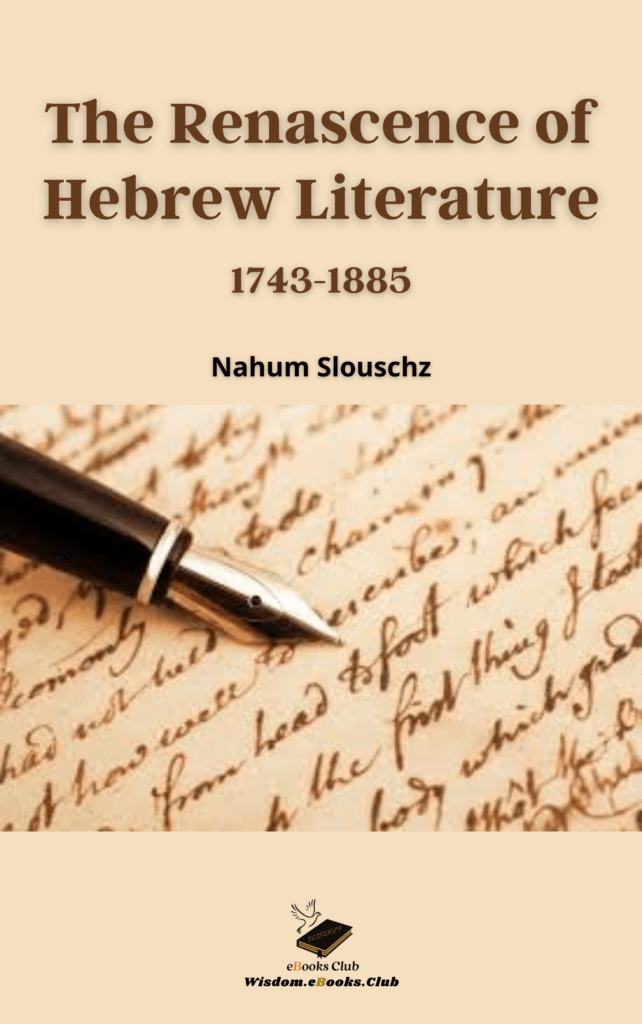
Initially published in French in 1903 as the Nahum Slouschz’s doctorate thesis at the University of Paris, this book explores the resurrection of Hebrew as a literary language and presents an analysis of the literature it has contributed, by a “grievous spectacle of poets and writers who are constantly expressing their anxiety lest it disappear within them.” European in extent and encapsulating all the passion and discord of the writings of a nation trying to find its voice, this is a compassionate and encouraging work, one that anyone will find practical and entertaining.
The evolution from Medieval Hebrew to Israeli or Modern Hebrew developed over many years. Many scholars tell us that the language began to change by the early 16th century. Amongst the first appearances were the first Yiddish‑Hebrew dictionary by Elijah Levita (1468‑1549), A. dei Rossi’s Me’or Einayim (1574) and the first Hebrew play by J. Sommo (1527‑92). They adapted Hebrew to modern needs, and it remains in use in writing today.
The Haskalah (Jewish Enlightenment)

The first Hebrew newspapers appeared in the 18th century. I. Lampronti (1679‑1756) at Ferrara and, from 1750, M. Mendelssohn at Dessau were the forerunners. A periodical, Ha‑Me’assef, ran quarterly from 1784 to 1829. The “Society of Friends of the Hebrew Language” edited it, and it contained many writings from prominent leaders of the Haskalah (Jewish Enlightenment) movement. In 1856 they printed the first weekly newspaper, Ha‑Maggid, in Russia. The leaders of the Jewish Enlightenment sought to revive Hebrew as a thriving language, by working to purify the language and advocating its correct use.
They likewise strengthened its capacity for communicating by borrowing and translating words from German and other Western languages. Many of the group’s leaders wanted to preserve Rabbinic Hebrew as an authentic element of the modernized language, but the bulk of them agreed to adopt the unadulterated form of Biblical Hebrew for verse and on an Andalusian style for writing instead. The Andalusian style is comparable to that practiced in the 12th and 13th centuries by the well-known family of Jewish translators, the Ibn Tibbons.
Many writers in the latter part of the 19th century paved the way for modern Hebrew; especially the playwright D. Zamoscz, who composed the first contemporary play in 1851, and novelist like A. Mapu who wrote the first book in this new style, and Yiddish linguists such as S.J. Abramowitsch.
Many of the 19th‑century authors sought to adopt a biblical form of the language and usually established a framework contradictory to its essence and that typically contained many grammatical errors. Mendele, who penned in both Hebrew and Yiddish, adopted into his terminology from various sources, including Biblical Hebrew and Yiddish. He along with many other writers made significant strides towards making sure that Hebrew would again become a spoken language.
Hebrew in Palestine (Pre-State Israel)
The printing of Eliezer Ben-Yehuda’s editorial titled “A burning question” in 1879 spawned a new generation of the Hebrew language. It made spoken Hebrew one of the most significant facets of the new settlement in Palestine.
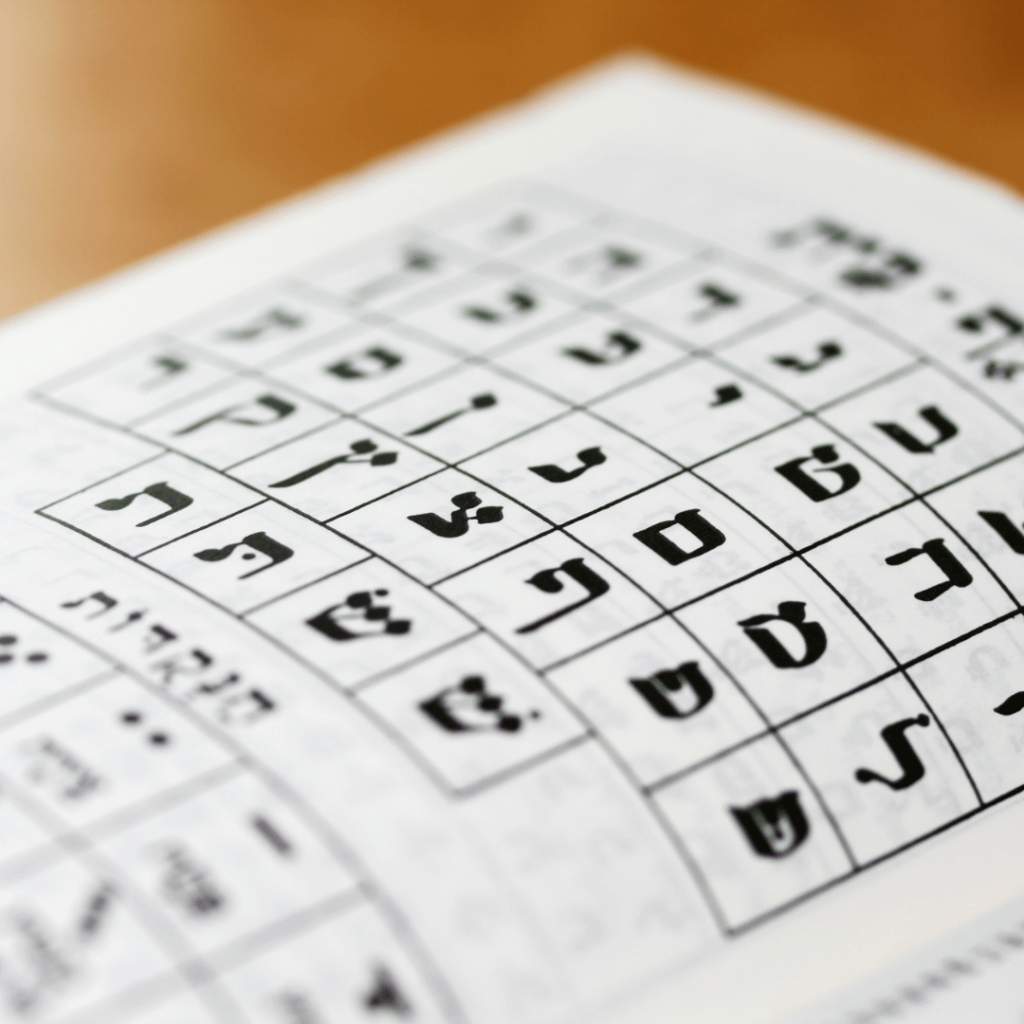
Many Palestinian Jews already used Hebrew as a language spoken by individuals who had differing primary languages. However; Hebrew was never implemented universally, and the different emigrant communities persisted in speaking their primary languages. A primary element that helped Ben‑Yehuda to reestablish the Hebrew language was the absence of an existing nationalized language in the country, an eagerness by eastern and central European Jews to restore their culture, and remembrances of the ancient nobility that the Jews had previously experienced in Palestine. While in Jerusalem in 1881, Ben‑Yehuda moved forward with his aspiration of transforming Hebrew into a language fit for everyday practice. Ben-Yehuda set out to advance a fitting terminology, in which he blended words from archaic and out-of-date literature to form original words incorporated into his Thesaurus. Ben‑Yehuda describes the processes utilized for tailoring the language daily use in his Thesaurus.
The biggest hindrance to establishing Hebrew as a widespread language was the origination of new words. Therefore, discovering new words became the primary task of Ben‑Yehuda and the Language Council. Mechanisms established to adapt Hebrew for everyday practice include the addition of words taken from Arabic, based on their linguistic closeness to Hebrew, and a return to the scientific and specialized Hebrew terminology of the Ibn Tibbons translations. Ben‑Yehuda adopted many effective Hebrew and Aramaic phrases, and Latin and Greek loanwords, from the Talmud and the Mishnah.
They applied Aramaic linguistic patterns and suffixes for infrequently used biblical words, and root words confirmed in Biblical Hebrew were manipulated to extract new words conforming to their historic morphological forms.
Nahum Slouschz
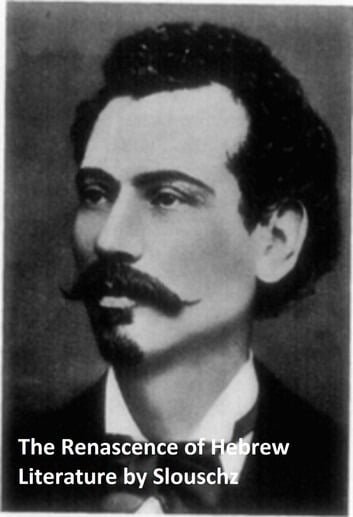
- Nahum Slouschz was born on November 1872 in Smarhon, Vilna district, Byelorussia and died in Tel Aviv, Israel on December 23, 1966. Slouschz was a Russian-born Israeli archaeologist, writer and linguist recognized for his research of the “secret” Hebrew communities in North Africa, particularly, Ethiopia, South Africa, Tunisia and Libya, but also in many secluded territories of Africa, and also in Portugal.
- When he was 10 years old, the family moved to Odessa where his father, R. Dovid-Shloyme, became the rabbi at a temple on the outskirts of Moldavanka. Besides being a rabbi, Nahum’s father was a member of the Lovers of Zion and a Hebrew writer.
- Nahum frequently studied the Talmud and the Tanakh with his father, in addition to learning foreign languages and worldly studies from his private tutors.
- At nineteen, the Hovevei Zion Society of Odessa sent him to Palestine to research the possibility of settling a territory in the Holy Land. He was not unsuccessful and returned home, but did return to Palestine in 1919 and became a permanent resident of the country. In 1896 he traveled to Austria and Lithuania and Egypt before going back to Palestine.
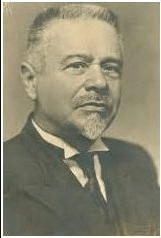
- Slouschz graduated from the Rabbinical Seminary in Odessa, and afterward taught Hebrew literature at Sorbonne University in Paris, and then in America. He was an associate of Theodor Herzl, the founder of the Zionist Organization, and was known as the father of the State of Israel. Slouschz headed archeological expeditions in Tiberias and Jerusalem.
- He studied philosophy and belles-lettres at the University of Geneva in 1898. During this period, Nahum assisted in the set-up of the Swiss Federation of Zionists. He travelled to Paris in 1900, where he learned Oriental languages. He worked as a journalist at several newspapers, including Ha-Melitz and Ha-Tsefirah. In 1902, he taught school in Auteuil. In 1903, he finished his doctorate at the University of Paris and wrote his thesis on the topic of the renaissance of Hebrew literature. His thesis was initially published in French and a later revision in Hebrew under the title “Korot ha-Sifrut ha-Ìvrit ha-Hadasha.” The English version was released in 1909 incorporating new material, and was published under the title The Renascence of Hebrew Literature (1743-1885). In 1904, he taught on Neo-Hebraic composition at the University of Paris.
Publicated Wroks
- Among his best works were books entitled “Across Unknown Jewish Africa,” and “The Renaissance of Hebrew Literature.”
- His first article was written in 1887 called Haeshkol (The Cluster), and he later wrote articles for: Hamelits (The Advocate), Hatsfira (The Siren), Hapisga (The summit), Haḥavatselet (The Daffodil), and Voskhod (Sunrise), among others. At that time, he published in book form: Kat hamityahadim berusya (A group of converts to Judaism in Russia) (Vienna, 1889); Ma yaase haadam velo yeḥele (What a person needs to do so as not to get sick) (Jerusalem, 1891), 46 pp.; Haosher meain yimatse (Where is happiness to be found?) (Jerusalem, 1894); and Mnemotekhnik (The art of memory), in Russian.
- In 1903 he obtained his doctoral degree for his treatise, La Renaissance de la littérature hébraique, 1734-1885, and it was later published in book form in French (Paris, 1903) and in Hebrew as Korot hasifrut haivrit haḥadasha (Warsaw, 1906), and in English as Renascence of Hebrew Literature (1909).
Awards
- Nahum Slouschz won the Bialik Prize for Jewish thought in 1942. The Bialik Prize is a yearly literary award presented by the city of Tel Aviv, for notable achievements in Hebrew literature.
To see more information about this topic or other religious topics, you may check the books and magazines available at www.wisdomebooksclub.com or visit our peals of wisdom page page by clicking on this link to access more interesting blog articles, games, quizzes, music videos, religious poems, Jewish recipes, popular sermons, and more.
